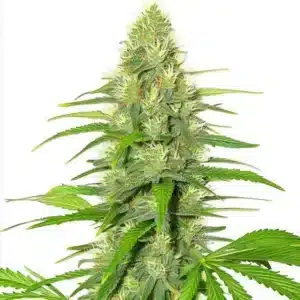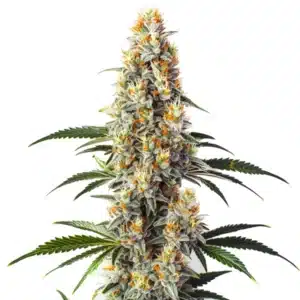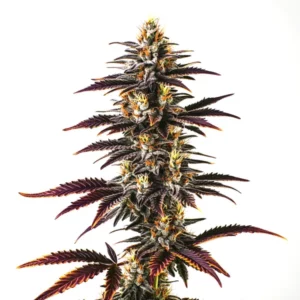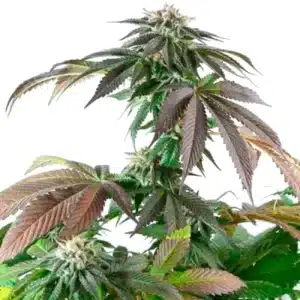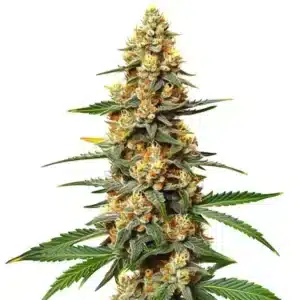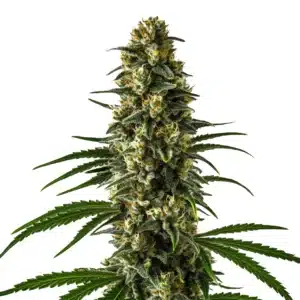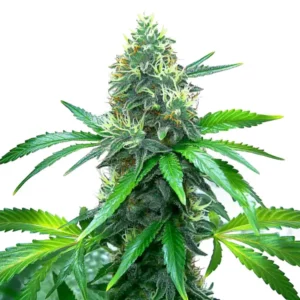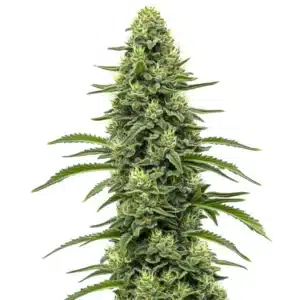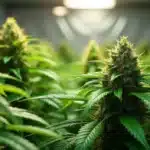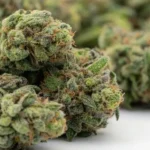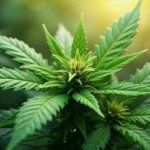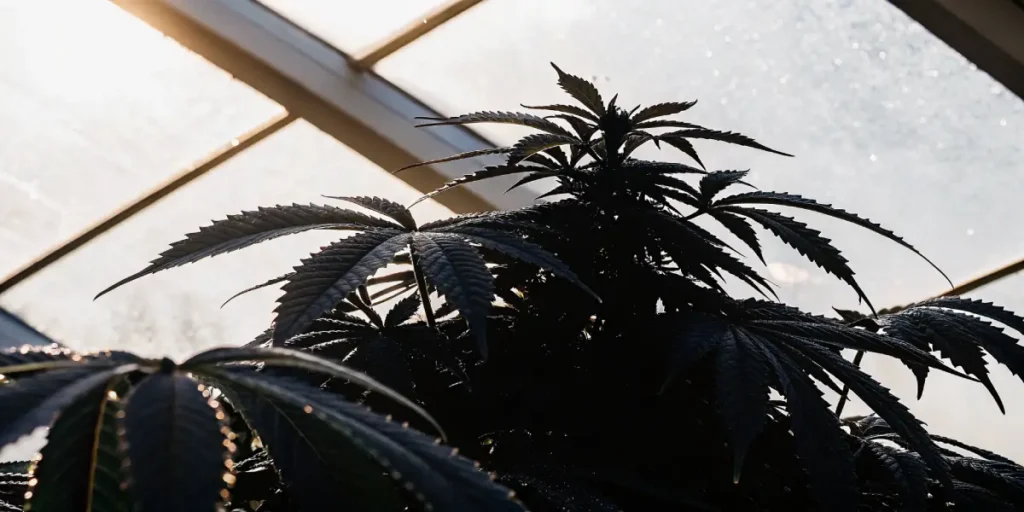
Reactive Oxygen Species in Cannabis: Friend or Foe? How ROS affect plant health, potency & yield
Reactive oxygen species in cannabis: friend or foe? These molecules are a bit like the double-edged sword of the cannabis world. On one side, they can be villains causing oxidative stress and damaging plant cells. On the other, they act as signaling molecules, playing crucial roles in plant growth and defense responses. For cannabis growers, knowing this dual nature is key to maximizing plant health and optimizing yields.
When you grow cannabis, you might notice that environmental stresses, like too much light or an imbalance in nutrients, can lead to an increase in reactive oxygen species. This is the plant’s stress response mechanism kicking in. If managed well, it can help your cannabis plants develop stronger defense mechanisms. If not, it can lead to reduced potency and lower yields.
Recommended Strains
Blue Dream
|
|
THC | 17% - 24% (Medium) |
|
|
Type | Feminized |
|
|
Yield | High |
|
|
Phenotype | 50% Indica / 50% Sativa |
White Widow
|
|
THC | 18% - 25% (Medium) |
|
|
Type | Feminized |
|
|
Yield | High |
|
|
Phenotype | 45% Indica / 55% Sativa |
Think about it like this: a little stress can be good, encouraging resilience. Too much, however, and your plants might just buckle under the pressure. The impact of reactive oxygen species on cannabis health benefits is significant, influencing everything from the plant’s growth rate to its final cannabinoid profile.
Reactive Oxygen Species Role in Cannabis Plant Stress Response
Reactive oxygen species in cannabis: friend or foe? These molecules play a crucial role in the way cannabis plants respond to stress. When plants face environmental challenges, like drought or high salinity, they produce ROS as a defense strategy. These molecules act as messengers, signaling the plant to activate its stress response pathways.
For example, when growing a strain like White Widow from Blimburn Seeds, you’ll want to monitor stress levels closely. This strain, known for its resilience, can still succumb to oxidative damage if ROS levels get too high. By managing stress effectively, you ensure your White Widow plants thrive, producing abundant and potent yields.
Knowing the reactive oxygen species role in cannabis plant stress response is vital. It helps growers identify when their plants are under too much stress and need intervention. By closely monitoring for signs of stress, such as leaf discoloration or stunted growth, growers can take preemptive action to adjust environmental factors and bring ROS levels back to a safe range.
Additionally, breeders are exploring ways to enhance the natural resilience of cannabis strains against ROS. By selecting plants that exhibit strong stress responses, they aim to develop new varieties that can better withstand environmental pressures, ultimately leading to more robust and productive crops.
Promos & Deals
Antioxidant Properties of Cannabis Against Reactive Oxygen Species
Cannabis has evolved its own defense mechanisms against the potential harm of reactive oxygen species. One of these defenses is its antioxidant properties. Antioxidants in cannabis can neutralize excess ROS, preventing them from causing cellular damage.
Strains like Blue Dream are particularly interesting. Known for their robust antioxidant properties, Blue Dream plants can better manage oxidative stress. This not only protects the plant but also enhances the quality of its buds, preserving the cannabinoids and terpenes that contribute to its unique effects and flavors.
Reactive oxygen species in cannabis: friend or foe? The antioxidant properties of cannabis against reactive oxygen species are not only beneficial for the plants but also have implications for human health. Consuming cannabis products rich in antioxidants might offer protective effects against oxidative stress-related conditions, making the study of these properties an exciting area of research.
Moreover, the breeding of cannabis strains with enhanced antioxidant capabilities is a promising avenue. By focusing on genetic characteristics that promote natural antioxidant production, breeders aim to create plants that are more resistant to oxidative damage, leading to improved yields and potency.
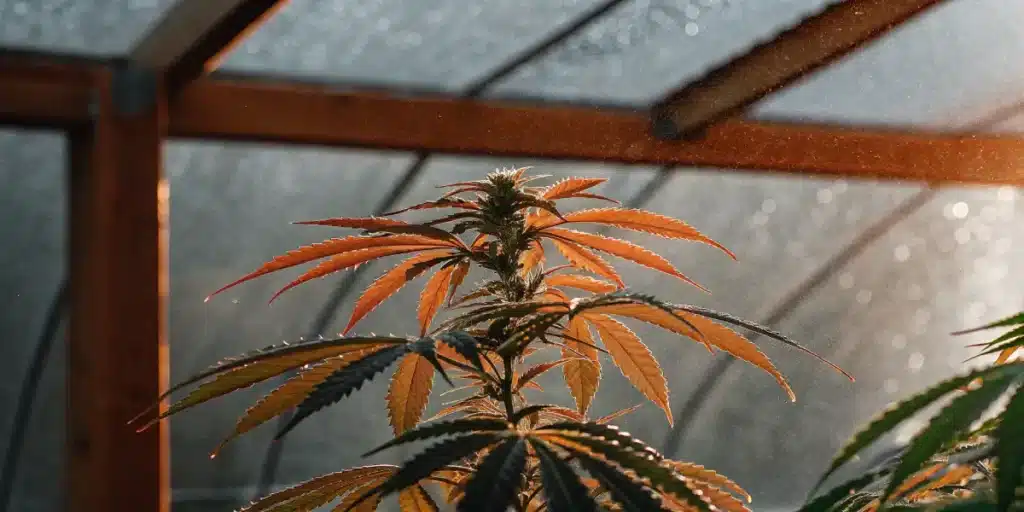
Cannabis Cultivation and Reactive Oxygen Species Management
Managing ROS levels is a crucial aspect of successful cannabis cultivation. By keeping a close eye on environmental factors like light intensity, nutrient balance, and temperature, growers can maintain optimal ROS levels. This not only helps in stress management but also in achieving higher potency and yield.
For those growing Girl Scout Cookies, careful ROS management can make a significant difference. This strain is known for its high THC content and unique terpene profile. Proper management of reactive oxygen species ensures these characteristics are preserved, enhancing both the plant’s yield and its final quality.
Effective cannabis cultivation and reactive oxygen species management require a holistic approach. This includes not only adjusting physical parameters like light and temperature but also ensuring that the plants have the right nutrients to bolster their natural defense systems. Regular soil and foliar nutrient analysis can provide insights into what adjustments are necessary.
Furthermore, integrating technology such as sensors and automated systems can aid in real-time monitoring of environmental conditions. These tools allow growers to respond swiftly to any changes that might lead to increased ROS production, thereby maintaining a stable and conducive growing environment.
Reactive Oxygen Species Influence on Cannabis Potency and Yield
Reactive oxygen species in cannabis: friend or foe? The influence of these molecules on cannabis potency and yield is undeniable. While ROS are essential for certain growth processes, an imbalance can lead to reduced cannabinoid production and compromised plant health. This is why knowing and managing ROS is so vital for growers.
Imagine growing a potent strain like Blue Dream, only to find that its THC levels are lower than expected. This could be due to excessive ROS production during its growth cycle. By maintaining a balance, you ensure that your plants not only survive but thrive, reaching their full potential in both potency and yield.
The reactive oxygen species influence on cannabis potency and yield is a complex interaction that requires careful observation. Excessive ROS can lead to a breakdown of essential biological structures within the plant, ultimately affecting its ability to produce high-quality flowers. This makes the management of ROS a priority for anyone looking to achieve top-tier results.
Moreover, research into the precise mechanisms by which ROS affect cannabinoid synthesis could unlock new methods for boosting plant potency. By manipulating these pathways, scientists and growers could potentially enhance the therapeutic and recreational value of cannabis strains, offering more effective products to consumers.
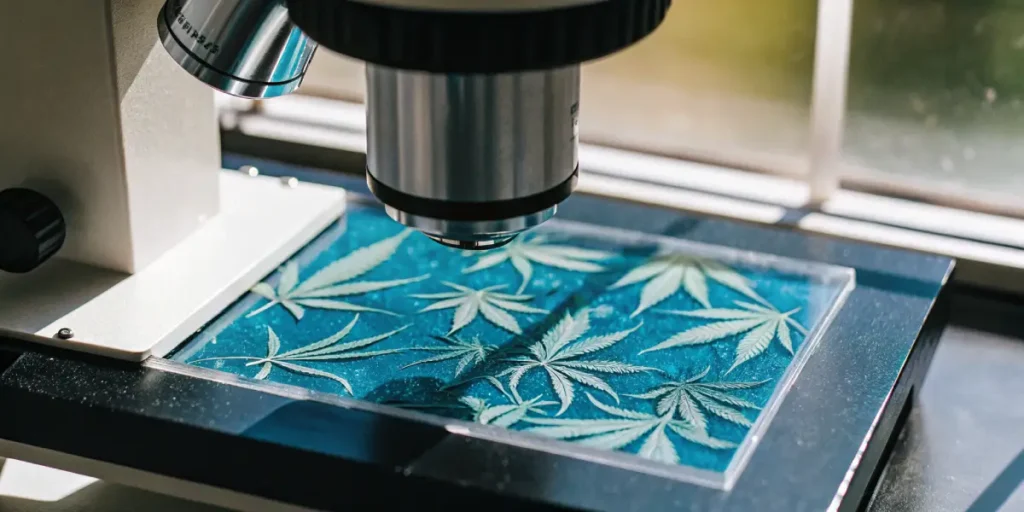
FAQs
What are reactive oxygen species, and why do they matter in cannabis cultivation?
Reactive oxygen species are molecules that include free radicals, often produced in plants under stress. In cannabis cultivation, they play a dual role. While they can help plants respond to stress, excessive ROS can lead to cellular damage and reduced plant health.
For growers, managing ROS is crucial. This involves optimizing environmental conditions to support plant growth without inducing excessive stress. By doing so, you enhance the plant’s resilience and ensure a successful harvest.
Knowing the significance of reactive oxygen species in cannabis: friend or foe? is essential for cultivating high-quality plants. By balancing the beneficial and harmful effects of ROS, growers can optimize plant health and maximize yield potential, ensuring a productive harvest.
Furthermore, educating growers on the importance of ROS management will help improve overall cultivation practices. This knowledge not only benefits individual growers but also contributes to the advancement of the cannabis industry as a whole, promoting more sustainable and efficient farming methods.
How do cannabis strains differ in their response to reactive oxygen species?
Different cannabis strains have varying levels of resilience to reactive oxygen species. Some, like White Widow, are naturally more resistant to oxidative stress. This means they can manage ROS more effectively, resulting in healthier plants and better yields.
Other strains, such as Girl Scout Cookies, may require more careful management of environmental conditions to avoid excessive ROS production. Knowing the specific needs of each strain helps in tailoring cultivation practices to maximize their potential.
The genetic makeup of each cannabis strain plays a significant role in its ability to handle oxidative stress. Strains that have evolved in harsher environments often possess stronger antioxidants and other protective mechanisms, allowing them to thrive even under challenging conditions.
Breeders and researchers are continually exploring these genetic differences to identify traits that could be advantageous in cultivation. By selecting for specific characteristics, they aim to develop new strains that are not only more resistant to ROS but also offer superior potency and yield.
Can antioxidants in cannabis really protect against reactive oxygen species?
Yes, cannabis plants contain natural antioxidants that help neutralize excess reactive oxygen species. These compounds play a key role in safeguarding the plant’s cellular structures, ensuring healthy growth and development.
For instance, strains like Blue Dream are known for their strong antioxidant properties. This trait not only protects the plant but also contributes to the rich cannabinoid and terpene profiles that these strains are famous for.
The antioxidant properties of cannabis against reactive oxygen species have been a focal point for many researchers. These studies aim to understand how antioxidants can be leveraged in cultivation to enhance plant health and improve the quality of the final product. By focusing on these properties, growers can ensure their cannabis plants produce premium buds.
Besides, the exploration of antioxidant pathways within the cannabis plant could lead to innovations in crop management. By targeting these pathways, growers might develop new methods to bolster plant defenses naturally, reducing the need for external inputs and promoting sustainable cultivation practices.
What practical steps can growers take to manage reactive oxygen species in their cannabis plants?
Growers can take several measures to manage reactive oxygen species effectively. This includes monitoring and adjusting light intensity, ensuring proper nutrient balance, and maintaining optimal temperature and humidity levels.
Regularly assessing the plants’ stress levels and making necessary adjustments can help maintain a healthy ROS balance. This proactive approach ensures robust plant growth and maximizes both potency and yield.
Implementing a comprehensive management plan for cannabis cultivation and reactive oxygen species management is crucial. This plan should include regular environmental assessments and the use of tools like pH meters and hygrometers to ensure conditions remain within optimal ranges for plant growth.
Engaging in continuous education and staying updated with the latest research on ROS and plant physiology can also benefit growers. By knowing the latest techniques and findings, they can incorporate best practices into their cultivation routines, enhancing both the health and productivity of their cannabis crops.
How does the impact of reactive oxygen species on cannabis health benefits affect consumers?
The impact of reactive oxygen species on cannabis health benefits is directly linked to the plant’s cannabinoid and terpene profiles. Excessive ROS can diminish these compounds, affecting the overall quality and effectiveness of the cannabis product.
For consumers, this means the difference between a mediocre and a superior cannabis experience. By knowing and managing ROS during cultivation, growers can ensure that their plants produce the highest quality products, offering the full spectrum of cannabis health benefits.
Ensuring the optimal balance of ROS during cultivation is key to preserving the plant’s beneficial compounds. This, in turn, enhances the therapeutic and recreational effects experienced by consumers, making the management of ROS a pivotal aspect of cannabis production.
Furthermore, as more consumers become aware of the factors influencing cannabis quality, the demand for products grown with a focus on ROS management is likely to increase. This consumer awareness could drive the market towards practices that prioritize both plant health and environmental sustainability.



